Why Do Divers Use Helium?
Divers use helium for three reasons, all of which profoundly benefit diving safety. Breathing mixtures in scuba diving that contain helium are commonly referred to as “trimix”.
What is trimix?
Trimix is a mixture that contains three different gasses; helium, oxygen, and nitrogen. It is commonly used by technical divers, although recreational-level trimix certification courses are becoming more popular over recent years.
Trimix has three sub-classifications:
- Normoxic trimix
- Contains a ‘normal’ amount of oxygen
- The dive community considers 18-21% O2 normal
- Whereas in medical terminology, normoxic means specifically 21% O2
- The mix is breathable at the surface and at shallow depths
- Hypoxic trimix
- Contains less than 18% oxygen
- The mix is not breathable on the surface
- The %O2 determines a minimum safe depth for breathing
- It is breathable once the ppO2 equals 0.18
- Heliotrox
- Contains more than 21% oxygen
- It is enriched air nitrox (EANx) plus helium
- Typically used for 30-40m/100-130′ dives.
What are the reasons why divers use helium?
Oxygen toxicity
Oxygen is known to cause central nervous system (CNS) toxicity at higher pressures. This toxicity presents as convulsions (clonic seizures) which will typically drown the scuba diver.
The recommended maximum safe oxygen exposure for scuba diving is 1.4 ppO2. When breathing air (21%O2), this equates to 56.5m/185ft. Below that depth, the fraction of oxygen in a breathing gas must be reduced to maintain 1.4 ppO2. Helium is added to reduce the %O2.
Nitrogen narcosis
Nitrogen has strong anesthetic properties at higher breathing pressures. This is defined by the Meyer-Overton Law of Lipid Solubility.
As the partial pressure of nitrogen increases, the anesthetic effect becomes stronger. That anesthetic effect is known by divers as “nitrogen narcosis”.
Nitrogen narcosis causes a debilitating decline in cognitive ability; which is very hazardous when scuba diving.
Helium has a low lipid solubility and, thus, a low anesthetic effect. For that reason, helium is added to diving breathing gases to reduce the fraction of nitrogen and mitigate the debilitating effects of nitrogen narcosis.
Gas density
As the diver descends, their breathing gas becomes denser. Studies by Simon Mitchell, in conjunction with the US Navy Experimental Diving Unit (NEDU), have demonstrated that increasing gas density lowers respiratory performance and reduces the capacity to expel metabolized CO2.
Higher breathing gas density significantly increases the risk of hypercapnia (CO2 poisoning), along with CO2 narcosis when diving.
The recommended gas density limit by DAN is 5.2g per liter. When breathing air this equates to 31m/102′.
Helium has a very low molecular weight, so its addition to a breathing gas will lower the gas density.
Dive industry attitudes to gas density
Sadly, the recreational dive training industry ignores the issue of gas density. That’s purely a profitability consideration because the DAN gas density recommendations would necessitate using expensive helium for Deep Diver and entry-level technical courses.
Which diving agencies promote the use of helium?
Scuba training agencies have different policies on the use of helium between the depths of 30m/100′ and 55m/80′:
- Mandated use of helium below 30m/100′:
- GUE – Recreational Diver 3 course
- UTD – Recreational Diver 3 course
- Offer recreational-level helium courses (30m-40m/100-130′):
- RAID – Deep Diver w/Trimix
- IANTD – Recreational Trimix Diver
- Do not recommend or offer helium on recreational courses:
- TDI – Heliotrox Diver (45m)
- SSI – Extended Range Trimix (45m)
- ANDI – Technical Trimix (50m)
- PADI – Tec Trimix 65 (65m)
About The Author

Andy Davis is a RAID, PADI TecRec, ANDI, BSAC, and SSI-qualified independent technical diving instructor who specializes in teaching sidemount, trimix, and advanced wreck diving courses.
Currently residing in Subic Bay, Philippines; he has amassed more than 10,000 open-circuit and CCR dives over three decades of challenging diving across the globe.
Andy has published numerous diving magazine articles and designed advanced certification courses for several dive training agencies, He regularly tests and reviews new dive gear for scuba equipment manufacturers. Andy is currently writing a series of advanced diving books and creating a range of tech diving clothing and accessories.
Prior to becoming a professional technical diving educator in 2006, Andy was a commissioned officer in the Royal Air Force and has served in Iraq, Afghanistan, Belize, and Cyprus.
In 2023, Andy was named in the “Who’s Who of Sidemount” list by GUE InDepth Magazine.
Purchase my exclusive diving ebooks!
Why do divers use trimix FAQs
Trimix gas contains oxygen, helium, and nitrogen in varying proportions that are calculated based on the depth of a scuba dive; the maximum gas density, O2 toxicity partial pressure, and the desired level of narcosis management.
Nitrox is a scuba diving gas that contains nitrogen and an elevated fraction of oxygen (22-40% O2). Trimix also contains helium gas, which is used to offset the dangers of gas density, oxygen toxicity, and nitrogen narcosis at deeper depths.
Trimix can be used at any depth, although it is not necessary unless narcosis management is needed, or when a non-helium gas mixture exceeds the recommended limits of 1.4 oxygen partial pressure or a gas density greater than 5.2g/liter.
Most training agency full (hypoxic) trimix courses only venture to around 100m/330′ in depth, although the certifications usually permit the diver to extend their depth range afterward. Trimix is used for all recreational deep diving, up to the current world depth record of 332.35m/1090′.
Regular air causes increasingly debilitating nitrogen narcosis below 30m/100′, and risks oxygen toxicity seizures beyond 56m/184′. Deep divers add helium gas into their mix to replace a proportion of the nitrogen and oxygen that they breathe. This is known as Trimix gas.
The cost of trimix gas fills varies greatly depending upon geographic region. Helium is generally much cheaper in the USA, and far more expensive when shipped to geographically remote diving locations.
Scuba divers use trimix for deeper diving where they have to limit the risks of nitrogen narcosis, gas density, and oxygen toxicity. A calculated amount of helium is added to the breathing mix to reduce the fractions of nitrogen and oxygen.
Yes, several dive training agencies introduce trimix certification within their recreational-level course structure. RAID offers trimix certification as an option with their Deep Diver course, GUE and UTD use trimix on their Recreational 3 courses, and IANTD offers a specific Recreational Trimix Diver course.
Hypoxic trimix is a diving gas containing helium that has less than 18% oxygen content. The diver cannot breathe this gas until they reach a depth where the oxygen partial pressure is sufficient to not degrade cognition.
Normoxic trimix is a diving gas containing helium that has between 18% and 21% oxygen content. It is breathable at the surface without degrading cognitive function.
Heliotrox is a diving gas containing helium that has an enriched oxygen content, greater than 21%. Helium replaces nitrogen for narcosis management and the increased fraction of oxygen permits longer no-stop dive times.
Trimix gas is used in both recreational and commercial diving. Trimix includes helium gas to reduce the fractions of oxygen and nitrogen. This mitigates the risks of nitrogen narcosis, oxygen toxicity, and gas density.
Recreational divers use four types of breathing gas mixture; regular air, enriched air nitrox (EANx), pure oxygen (for technical decompression), and trimix; which contains helium gas to mitigate the increasing risks of narcosis, oxygen toxicity, and gas density below the depth of 30m/100′.
Carbon Dioxide is the most debilitating gas in diving and is 25x more narcotic than nitrogen. CO2 retention, known as hypercapnia, results when scuba divers exert heavily on scuba dives; especially when breath gas density exceeds the DAN recommended limit of 5.2g/liter.
Trimix gas ratios are calculated for specific depths. That calculation includes; the Equivalent Narcotic Depth (END) for narcosis management, the maximum oxygen partial pressure (1.4ppO2) to mitigate O2 CNS toxicity risk, and the maximum desired gas density (5.2g/liter) to prevent CO2 retention.
Scuba divers reach their maximum recommended oxygen toxicity partial pressure limit (1.4ppO2) at a depth of 56.5m/185. Beyond this depth, the fraction of oxygen breathed must be reduced by adding helium to the breathing gas mixture. Scientific studies have also recommended a gas density limit to prevent hypercapnia issues, the current DAN recommendation of 5.2g/liter limits air diving to 31m/102′.
Originally posted 2019-02-22 12:34:35.







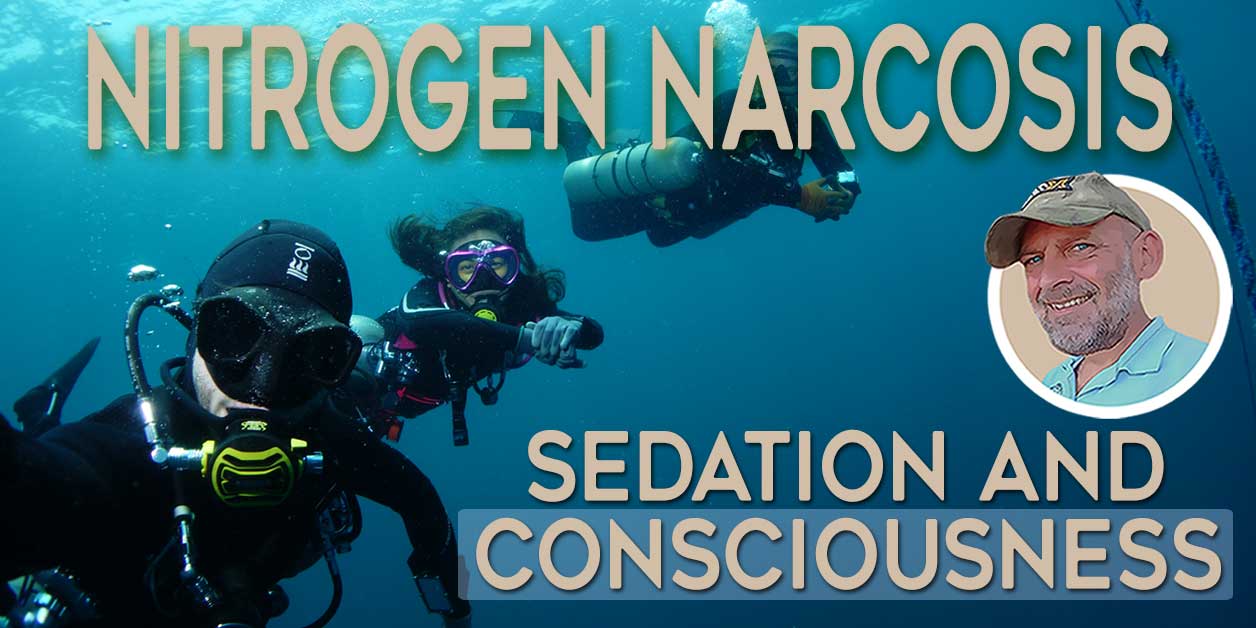
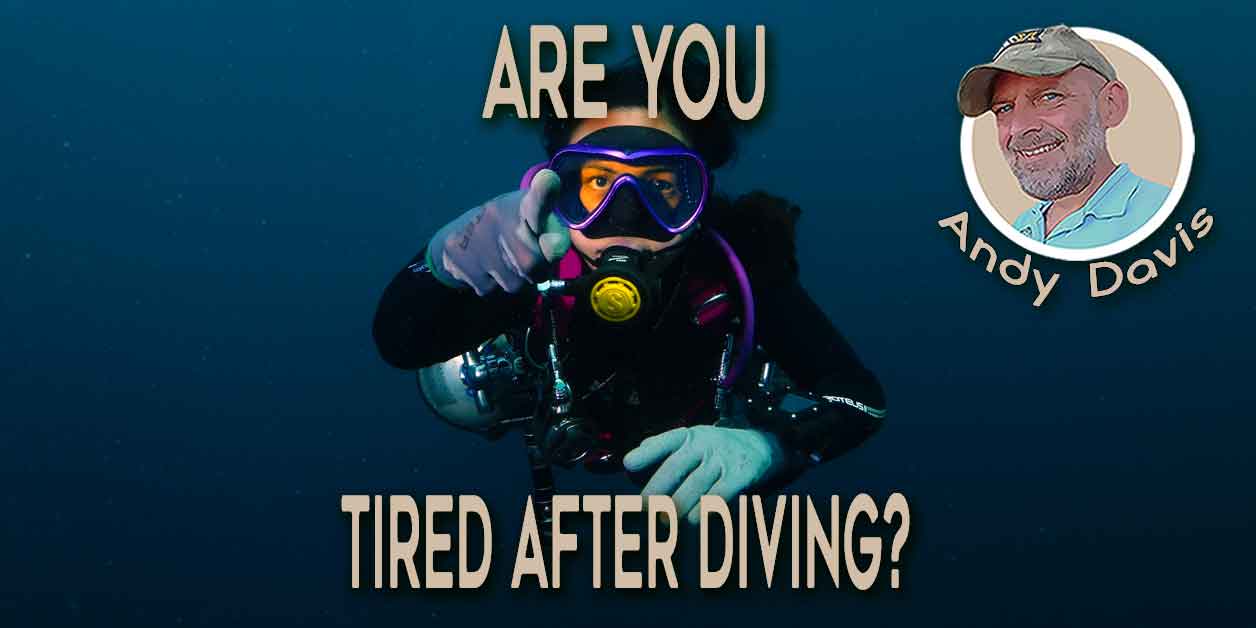


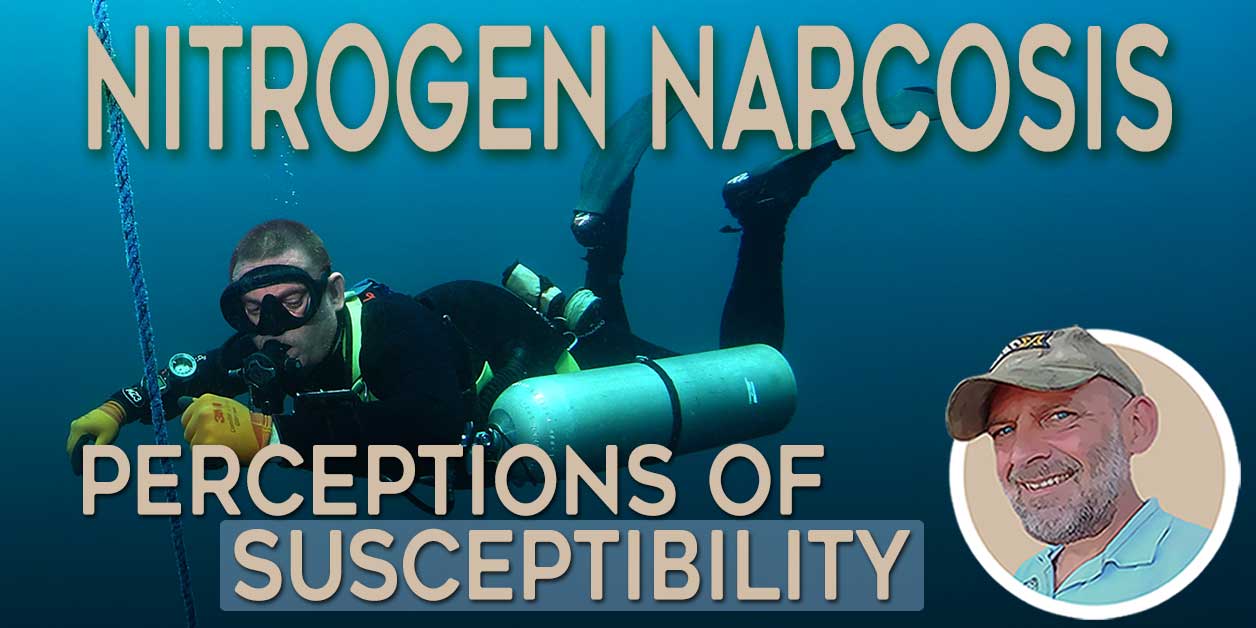

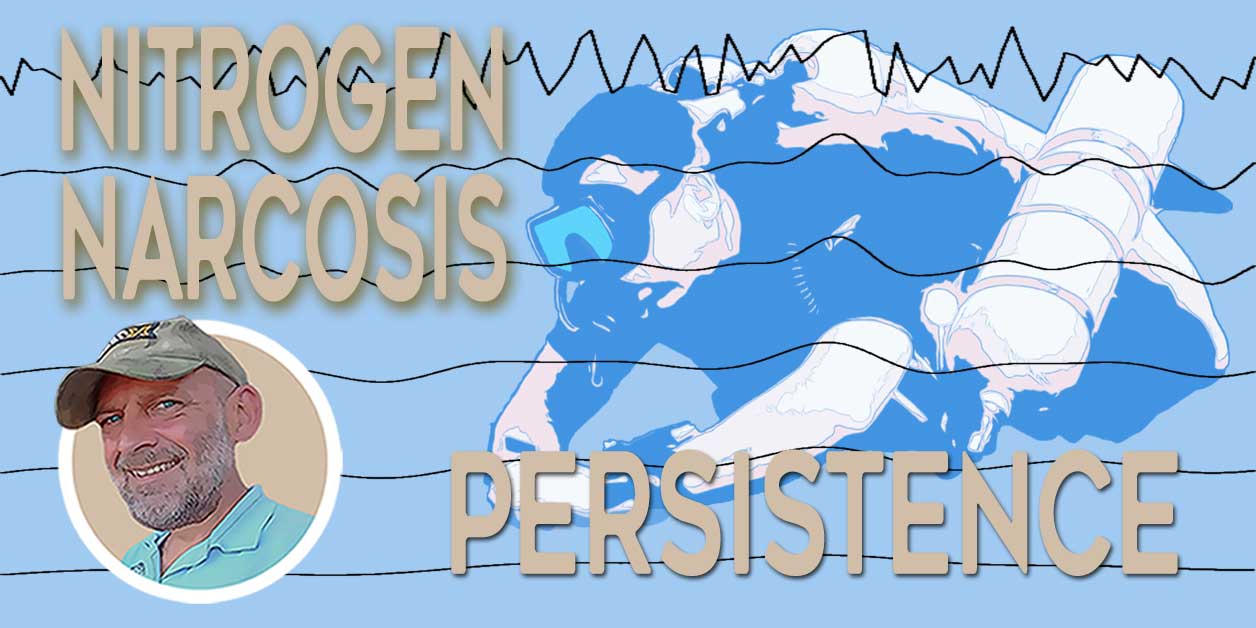
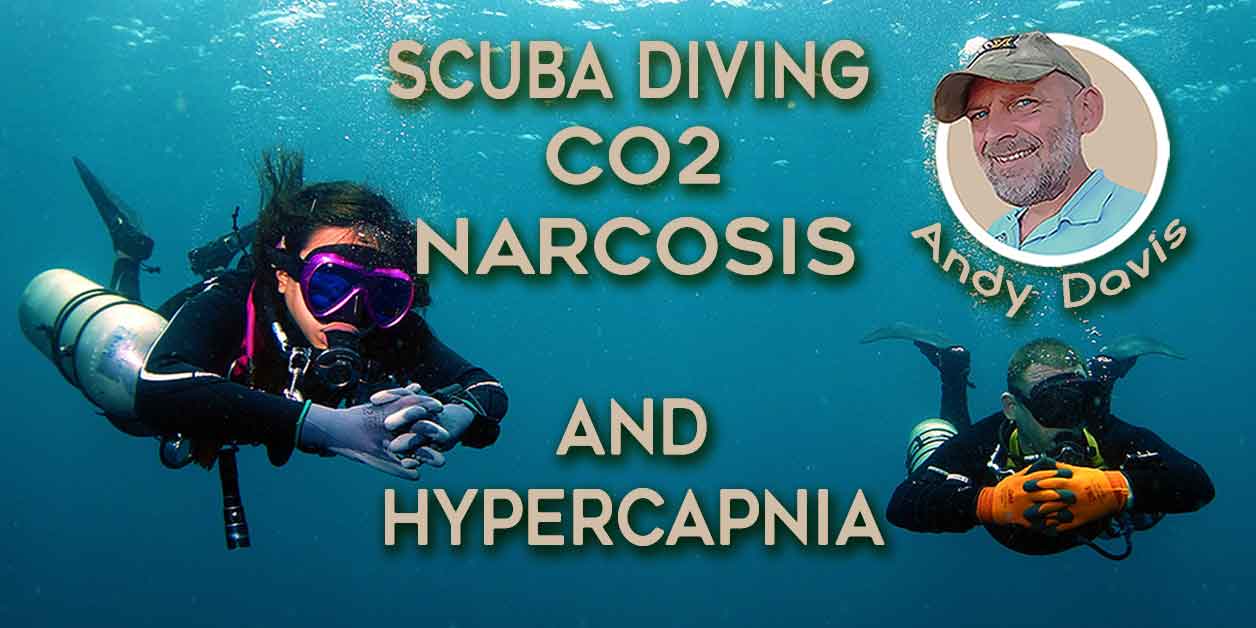

Hi
what does it mean in below
Numbers?
the depth of 30m/100′ and 55m/80′
and
31m/102′
with regards